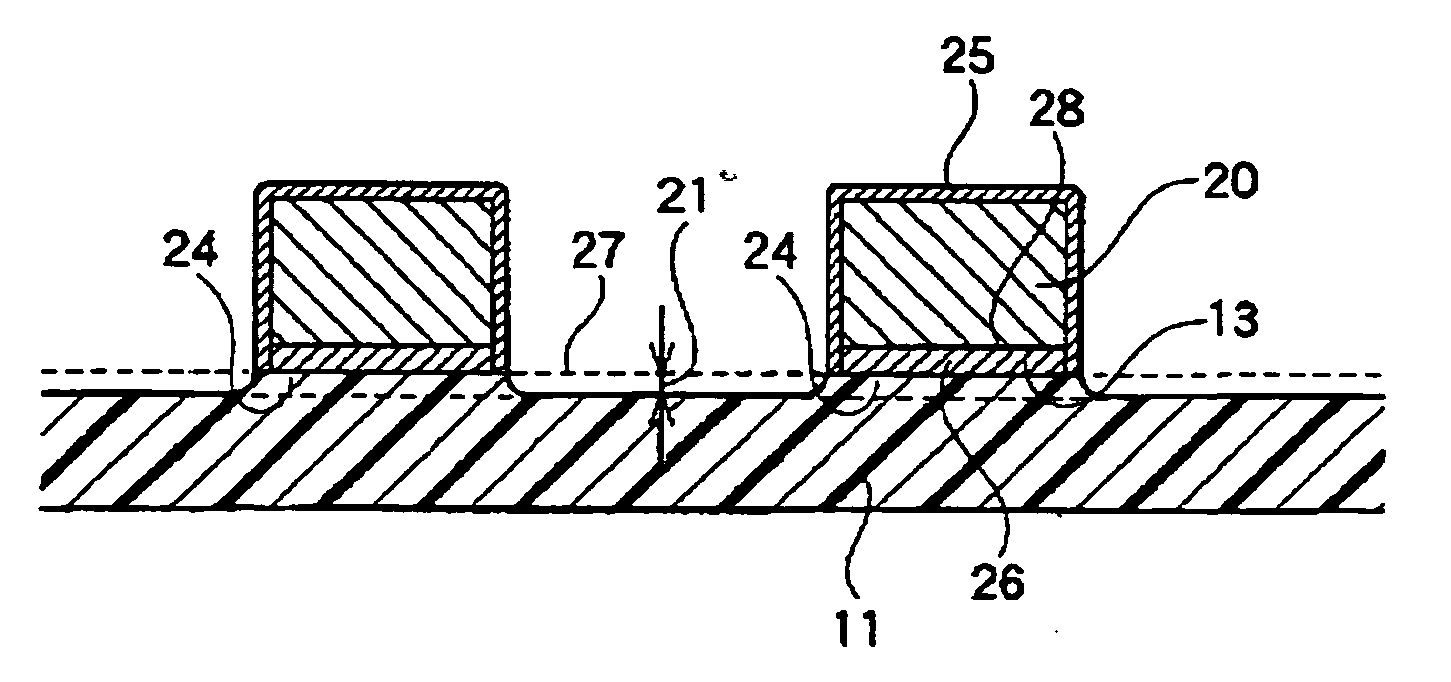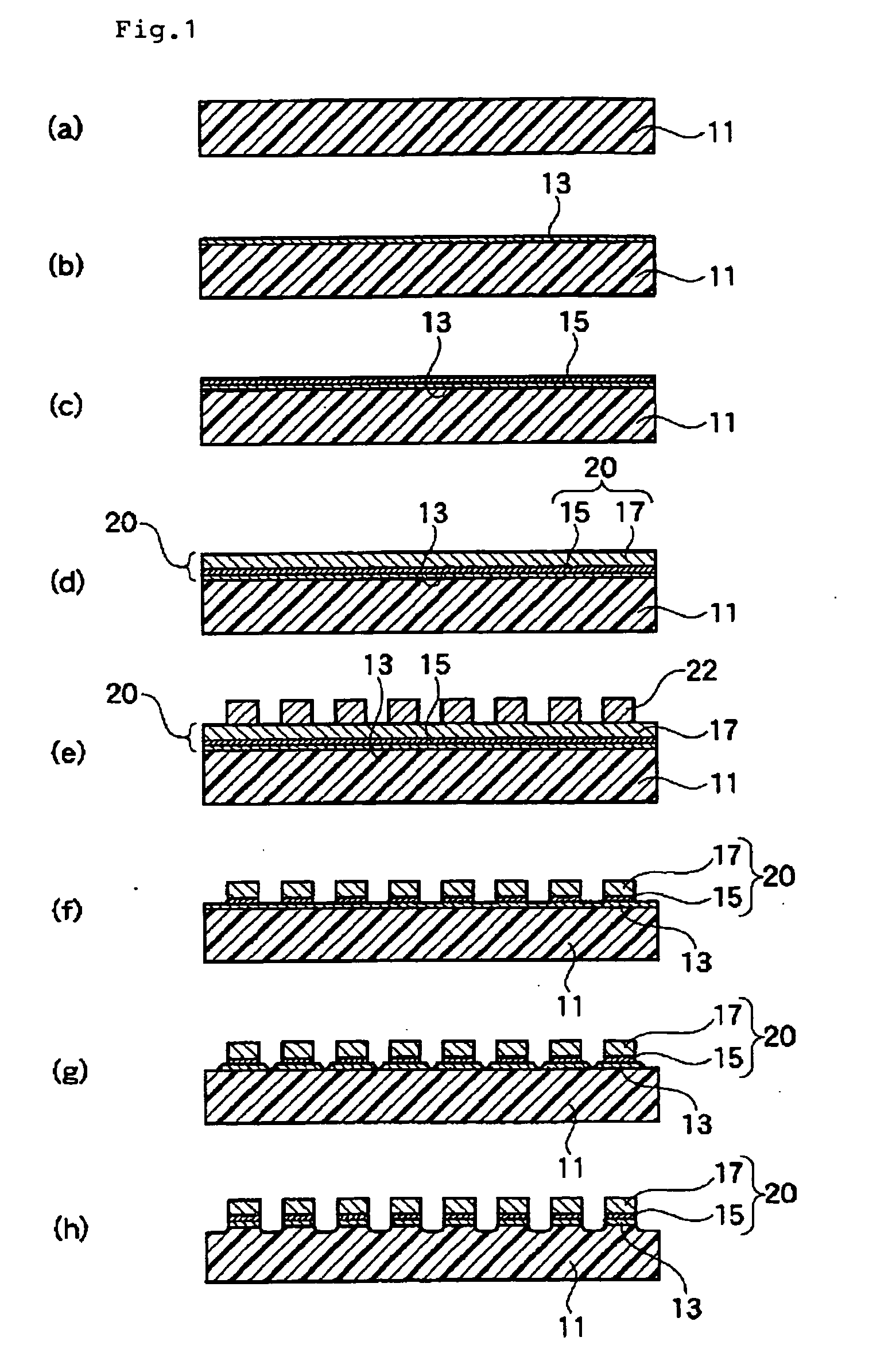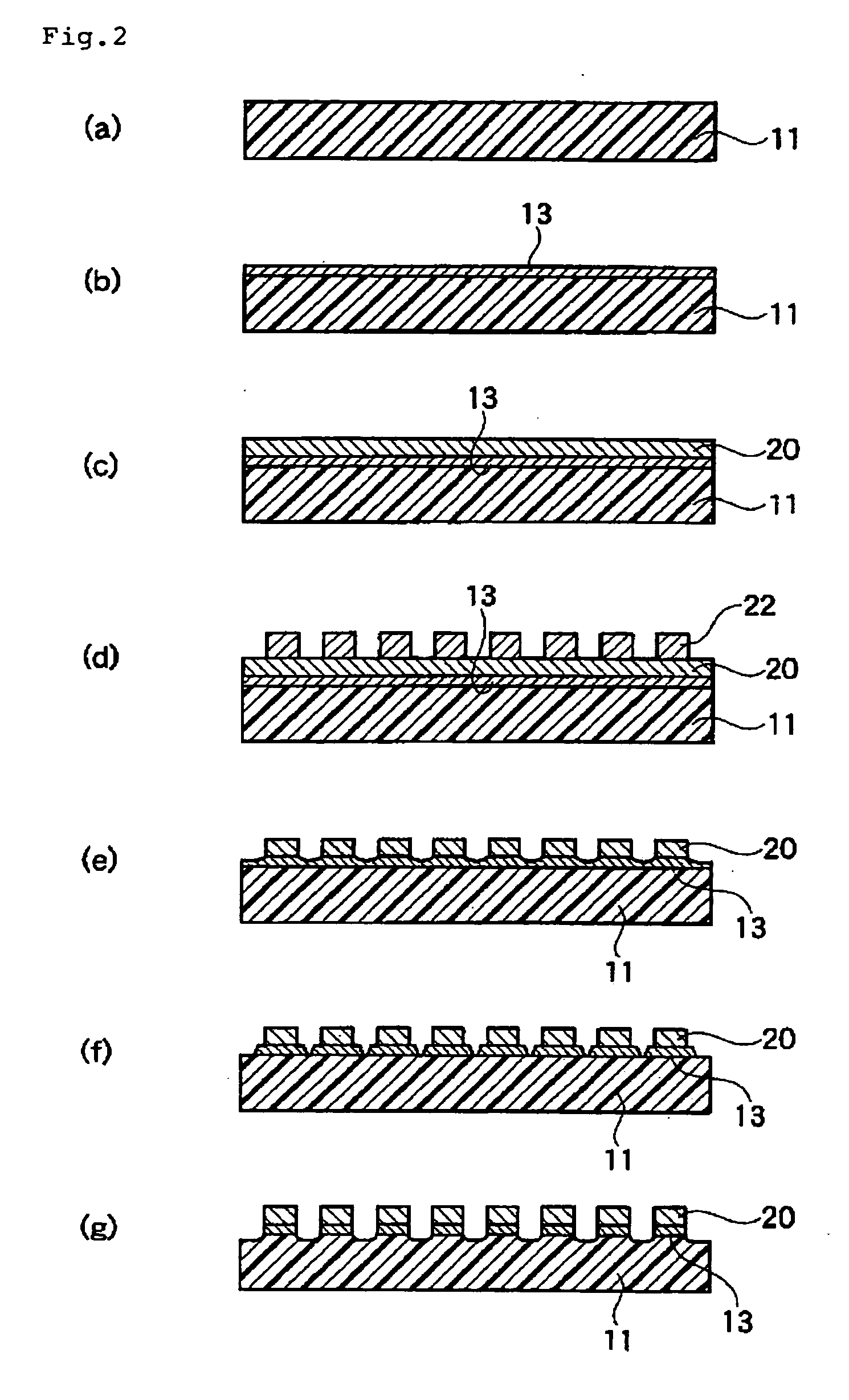Printed wiring board, its manufacturing method, and circuit device
a manufacturing method and printed wiring technology, applied in the direction of printed circuit aspects, conductive pattern reinforcement, insulation substrate metal adhesion improvement, etc., can solve the problems of wiring pattern producing a printed wiring board liable to warpage, copper foil having any smaller thickness is extremely difficult to handle, and copper foil having any smaller thickness is extremely difficult to manufacture. achieve long-term stability, prevent the change of resistance between wires, and improve the effect of electrical resistan
- Summary
- Abstract
- Description
- Claims
- Application Information
AI Technical Summary
Benefits of technology
Problems solved by technology
Method used
Image
Examples
example 1
[0073] A polyimide film (UPILEX S, manufactured by UBE INDUSTRIES, LTD.) having an average thickness of 50 μm was roughened on one surface by reverse sputtering. Subsequently, a nickel-chrome alloy layer was sputtered in an average thickness of 40 nm under the following conditions to prepare a base metal layer.
[0074] The sputtering conditions were such that the 50 μm-thick polyimide film was treated at 100° C. and 3×10−5 Pa for 10 minutes, followed by degasification, and a chrome-nickel alloy was sputtered at 100° C. and 0.5 Pa.
[0075] On the base metal layer, copper was sputtered at 100° C. and 0.5 Pa in an average thickness of 300 nm.
[0076] The sputtered copper layer was electroplated with copper, and an electrolytic copper layer (electroplated copper layer) having a thickness of 8 μm was formed.
[0077] The copper layer (conductive metal layer) was coated with a photosensitive resin, and the resin was photoexposed and developed to produce comb-shaped wiring patterns having wire ...
example 2
[0083] A polyimide film (UPILEX S, manufactured by UBE INDUSTRIES, LTD.) having an average thickness of 50 μm was roughened on one surface by reverse sputtering. Subsequently, a nickel-chrome alloy layer was sputtered in an average thickness of 40 nm under the following conditions to prepare a base metal layer.
[0084] The sputtering conditions were such that the 50 μm-thick polyimide film was treated at 100° C. and 3×10−5 Pa for 10 minutes, followed by degasification, and a chrome-nickel alloy was sputtered at 100° C. and 0.5 Pa.
[0085] The base metal layer sputtered as described above was electroplated with copper, and a conductive metal layer (electroplated copper layer) having a thickness of 8 μm was formed.
[0086] The conductive metal layer was coated with a photosensitive resin, and the resin was photoexposed and developed to produce comb-shaped wiring patterns having wire pitches of 30 μm (wire width: 15 μm, space width: 15 μm). The patterns were used as masks, and the copper ...
example 3
[0091] A polyimide film (UPILEX S, manufactured by UBE INDUSTRIES, LTD.) having an average thickness of 75 μm was roughened on one surface by reverse sputtering. Subsequently, a nickel-chrome alloy layer was sputtered in an average thickness of 30 nm under the same conditions as in Example 1 to prepare a base metal layer.
[0092] On the base metal layer, copper was sputtered in an average thickness of 200 nm under the conditions as described in Example 1.
[0093] The sputtered copper layer was electroplated with copper, and a conductive metal layer of electrolytic copper having a thickness of 8 μm was formed.
[0094] The conductive metal layer was coated with a photosensitive resin, and the resin was photoexposed and developed to produce comb-shaped wiring patterns having wire pitches of 30 μm. The patterns were used as masks, and the conductive metal layer was etched with a 12% cupric chloride etching solution containing 100 g / l of HCl for 30 seconds. Thus, wiring patterns were produc...
PUM
 Login to View More
Login to View More Abstract
Description
Claims
Application Information
 Login to View More
Login to View More - R&D
- Intellectual Property
- Life Sciences
- Materials
- Tech Scout
- Unparalleled Data Quality
- Higher Quality Content
- 60% Fewer Hallucinations
Browse by: Latest US Patents, China's latest patents, Technical Efficacy Thesaurus, Application Domain, Technology Topic, Popular Technical Reports.
© 2025 PatSnap. All rights reserved.Legal|Privacy policy|Modern Slavery Act Transparency Statement|Sitemap|About US| Contact US: help@patsnap.com



